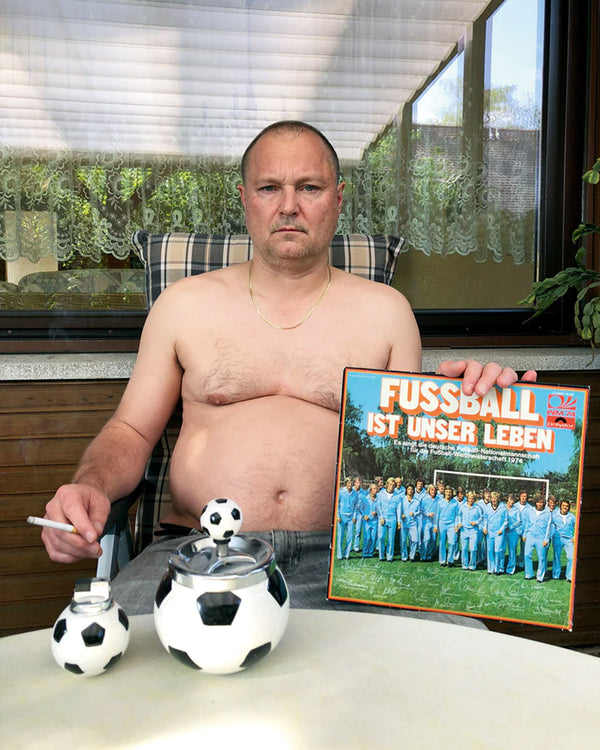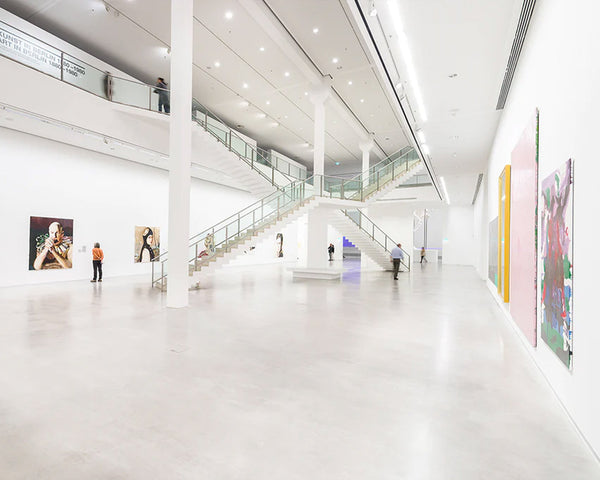Neue Nationalgalerie
15 January 2023 | by David Chipperfield
»We now retreat backstage while Mies is shown to his best,
and this beautiful building can once again step forward
into the life of Berlin.«
»We now retreat backstage
while Mies is shown to his best, and this beautiful building can once again step forward into
the life of Berlin.«

David Chipperfield opened his architectural practice in 1984; today, it has offices in Berlin, Milan, and Shanghai. In addition to practicing in his field, Chipperfield also lectures. In 2012, he curated the 13th International Architecture Biennale in Venice, and in 2020, he served as editor-in-chief of the design magazine Domus. He was awarded the Order of Merit of the Federal Republic of Germany in 2009 for his work in Germany and the United Kingdom.
© Photo Benjamin McMahon
David Chipperfield Architects saw themselves as »invisible architects« in the renovation of the Neue Nationalgalerie. Their goal was to preserve as much Mies van der Rohe as possible. For this reason, they also deliberately refrained from trying to visually »freshen up« or rethink the original design of the building.

© Photo Archive Neue Nationalgalerie and Simon Menges
I’m often asked why we accepted the task to refurbish the Neue Nationalgalerie, given that our role was to be a fairly invisible one, or rather one in which the very success of our work would depend on its invisibility. My answer is that we were all fascinated by this building. Firstly, because of its importance to the city of Berlin, which is profound. It’s an incredibly key building in the evolution of West Berlin, along with the work of Hans Scharoun in the Kulturforum. This was one of the most significant and intense moments of modern architecture, charged with more than just practical or even museological ambitions, but with the responsibility of defining the identity of a city finding its way out of destruction and division.

The steel and glas facade is the most characteristic feature of the Neue Nationalgalerie, but after fifty years, structural deficiencies became apparent. Thick laminated safety glass should prevent glass breakage in the future, and newly planned expansion mullions on each side of the façade replaced the continuous flat steel. With extraordinary technical improvements, the unique facade could be preserved in its original style. © Simon Menges / Ludwig Mies van der Rohe / VG Bild-Kunst, Bonn 2021

The need to comply with current fire safety regulations was the reason for improving and modifying the CEILING modules in the basement. A flexible ceiling system with metal cassettes now replaces the wooden substructure used during the original construction. © Simon Menges / Ludwig Mies van der Rohe / VG Bild-Kunst, Bonn 2021
On top of the geographic and historic importance of the building in post-war Berlin, there comes the importance of the building in the history of modern architecture. It is one of the purest examples of Mies van der Rohe’s work and everything his architecture stood for: its rationality, its utopian dimensions, and its formal ambitions. It is a precise and complete architectural mechanism. But it was this directness as a piece of architecture that made our involvement in its fabric all the more complicated.

The renovation has returned the building to its original spatial structure. In the basement, for example, the ideal plan for the public areas from the time of con- struction was restored, and the prevous painting and sculpture depots were converted back into a checkroom and bookstore. © Simon Menges / Ludwig Mies van der Rohe / VG Bild-Kunst, Bonn 2021

© Simon Menges / Ludwig Mies van der Rohe / VG Bild-Kunst, Bonn 2021
It could be argued that the reduction inherent to Mies' architecture is what eventually created so much of its technical failure. Addressing these technical problems without destroying the architectural qualities and everything they stood for was the critical task we all shared as a wider team. None of us underestimated the value of the building as an image, a design intention, or a piece of historical substance, so the discussion and debate around the refurbishment and interventions was focused, intense, and hugely rewarding. Finally, the work is finished and, in spite of our own tendencies as architects, I think we can be happy that there’s still really only one architect on display. We now retreat backstage while Mies is shown to his best, and this beautiful building can once again step forward into the life of Berlin.



